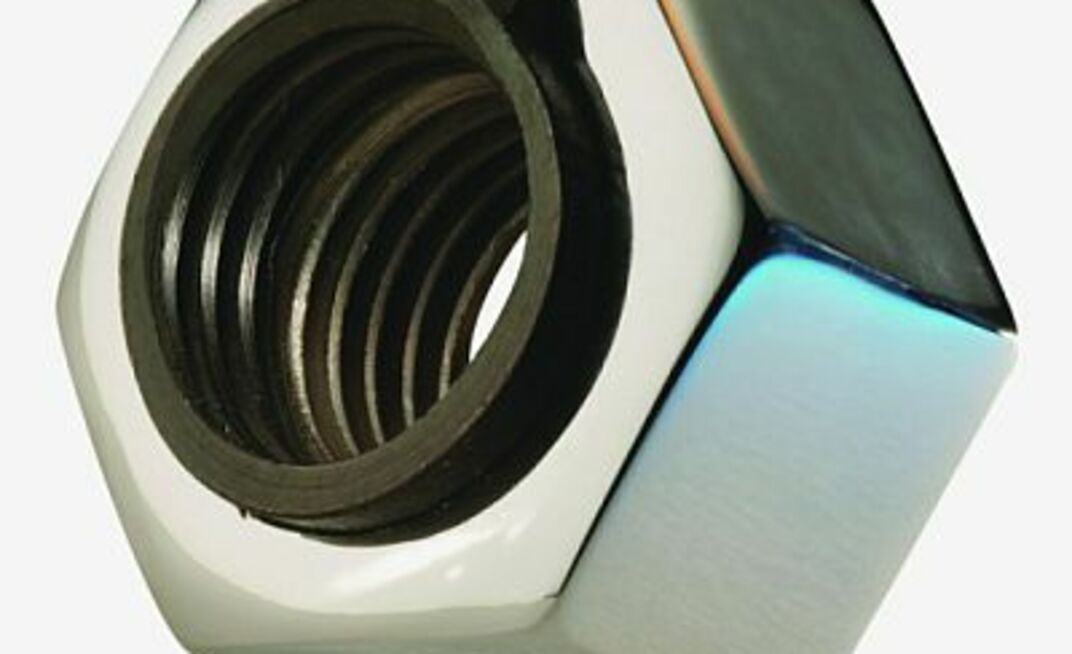Published in the August 2006 American Longwall Magazine
According to Illinois company Security Locknut, changing original equipment manufacturers’ specifications to incorporate its locknut technology on unit orders optimizes uptime/run time, increases equipment and wear part life span and removes the dangerous, temporary fix of a welding torch.
“Our biggest competitor is welding,” said Security Locknut’s Hal Pulfer, adding that every time a welder is used on the joints of equipment, its strength and durability is weakened overall. The use of the company’s locknuts, however, can instill confidence because of the fasteners’ reliability and productivity.
The design of the locknut itself has many features that can benefit operations, he said. Utilizing a proprietary elliptical spring steel insert technology developed by the company, each is easy to install where needed with no special tools required and all are easy to retrofit. Once in place, the unit’s self-locking feature eliminates the need for extra tightening.
“Perhaps its most notable feature, and the one which most users initially seek out in the part, is its ability to resist loosening from vibration or shock,” Pulfer said, adding that the loosening of bolts in this way is a common mining nuisance that simply does not happen with the company’s locknuts.
Through a one-part, two-piece design, they are “absolutely vibration-proof”, a feature that allows peace of mind for production and maintenance staffs alike. “The Security Locknut is an engineered fastener. A lot of thought went into its design in order for it to perform in all the ways it does; however, while this engineering is complex, the product’s design is amazingly simple for the user,” according to Pulfer.
If adjustment is needed, it is easily done and the locknuts are reusable and transferable from machine to machine. “One can do maintenance on a given piece of equipment and reuse the parts when finished, as well as take them off of a piece of equipment and use them on another one”, making their use more cost-effective and the locknuts “can be adjusted, readjusted, removed, repositioned, and reused as often as required”, he said.
Security Locknut’s fastening systems can be installed on, and serve the greatest benefits to, machines that are “critical to process flow”, Pulfer noted. This includes but is not limited to rotary breakers, sizers, vibration shakers, screeners, flight bars, rail tracks, crushers, and the entire channel of conveyors into a mine’s preparation plant.
“Performance equipment … needs to be up and running … if any one piece goes down, it all goes down. I like to think we can enhance the equipment and, in some cases, allow the equipment to do things that other fasteners would not allow it to do,” he said.
The company’s line includes bolt locks and washers but it says the locknut is its cornerstone. It is available in 3/8 inch up through 4in as well as metric sizes M1-M52. Its M30, for example, is most commonly used on flight bars and longwall conveyors, while the 7/8in size can be found on the center drums of continuous miners.
Pulfer said the company is always thinking and always working when it comes to improving equipment performance through better fastening technology, and some of the research and development efforts it has undertaken includes track work, wheel nuts and areas associated with drilling, such as stabilizer rods. It also continues to work in areas other than coal, such as the cement industry.
Customization to an operation’s needs is also possible, he said, and the locknuts can be ordered as kits (bolt, nut and washer) by a mine or the specification can be given to the OEM for new equipment orders.
Currently, the company has several mines utilizing their products across a broad range of applications. “Most notably,” said Pulfer, “[We have] been working directly with individual mines as well as with DBT America and RM Wilson on improving flight bar performance, with encouraging results.”
Security Locknut, he added, has been reaching out to end user operations with the benefits and advantages of their products because, while it is not always a top priority, the choices made surrounding joints and bolted connections on machinery can literally make or break the momentum of optimum production every mine strives to achieve and maintain. “Really, what it’s about is solving customer problems and giving them reliability and productivity in probably the most overlooked area of their specifications.”
























